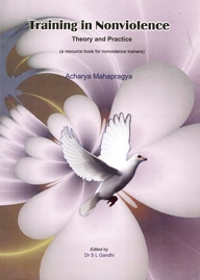We have succeeded in creating faith and we have also known the means, the ways, but if we do not do practice it will remain incomplete. The most important thing in training is that we put what we learn into practice. We have to strengthen our faith by practice. Those who do not do practice will not achieve anything. The means and practice go together. They cannot be separated from each other. The practice cannot succeed in the absence of the ways or methods and the methods cannot succeed in the absence of practice. Our practical application should be in the right direction. If we have to get milk, it cannot be obtained from a cycle. Milk can be obtained only from the cow. If we have a cow and if it is not milked, we will not get milk. In order to get milk we need both the cow and the knowledge of the process of milking. When both these techniques are combined, then only we get milk. In their absence we cannot get it. The means and practice are intimately connected.
Training will be useful and successful only when it is accompanied by practice. Today our outlook is very clear. In the middle ages the whole process of learning was confined to knowledge and intellect. The entire teaching was knowledgeoriented, intellect-oriented. It was not practice-oriented. But after the advent of science both theory and practice became an integral part of teaching. Now both theoretical teaching and practical teaching go together. Without practice nothing succeeds. A student will not gain any experience without it. A student becomes efficient only through practice and training.
The most important part of training is practice. Practice makes many facts. That which we do not understand by theory is easily understood by practice. First, a principle is explained, it is only after that the modalities of practice are discussed. The Acharya taught his students a lesson - ‘Let student not be angry when the teacher enforces discipline.’ It was a lesson. If the objective was just to learn this sentence by heart, it would be easy and everyone would do it. If mere knowledge of a particular fact could enable a person to get success, then no one in this world would be unsuccessful. Then everyone would embrace success. But the reality is that one doesn’t get success without practice. The Acharya taught the lesson and the student who learnt it was Koorgadu. He had a great weakness for eating. He could neither fast nor could he even take a vow to eat one meal a day. But he learnt the lesson of discipline and immediately realized the self. When all these three elements of training - inculcation of faith, knowledge of appropriate means and practice merge into one stream, then there will be no problem which cannot be solved. There will be no river, which cannot be crossed.
 Acharya Mahaprajna
Acharya Mahaprajna

